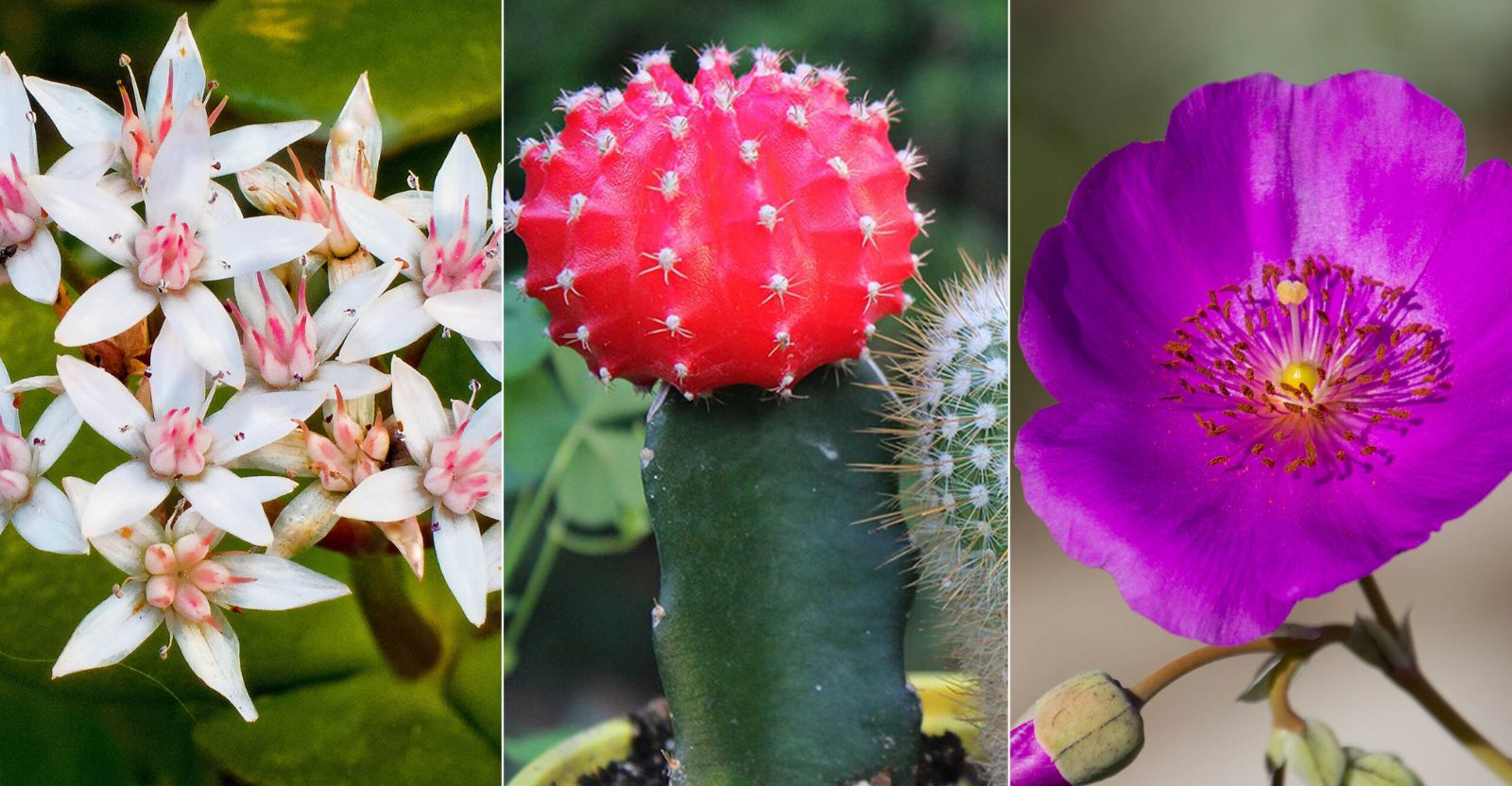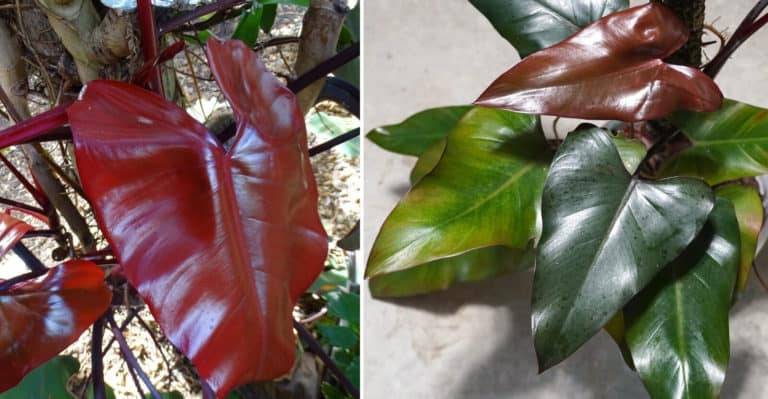Amazon has put together some great Home Gift Deals – save money and get your shopping done at the comfort of your home! Click here to see deals on Amazon
When it comes to flowering plants, few people consider succulents on top of their list. But succulents are unusual plants that don’t need much care and bloom astoundingly beautiful flowers.
Succulents have a very unique texture and form, and when it’s not blooming, it still provides you with a beautiful look at the plant and its leaves.
Let’s find out the best flowering succulents to grow indoor or outdoor.
What is Succulent?
Succulent is a plant that has thick, juicy, stems, and leaves that retain water. These plants are found in desert or low rainfall areas where the plant has to survive without water for a long duration.
In Latin, the word “Succulent” means juice or sap, and succulent plants hold lots of fluid inside it. You can find succulents all over the world except in the coldest environment such as Antarctica.
People often get confused succulents with cactus, but both are different species of plants. Succulents have delicate shiny leaves, and some species of succulents bear very colorful flowers.
List of Top 19 flowering succulents for any home and garden.
1. Orchid Cactus
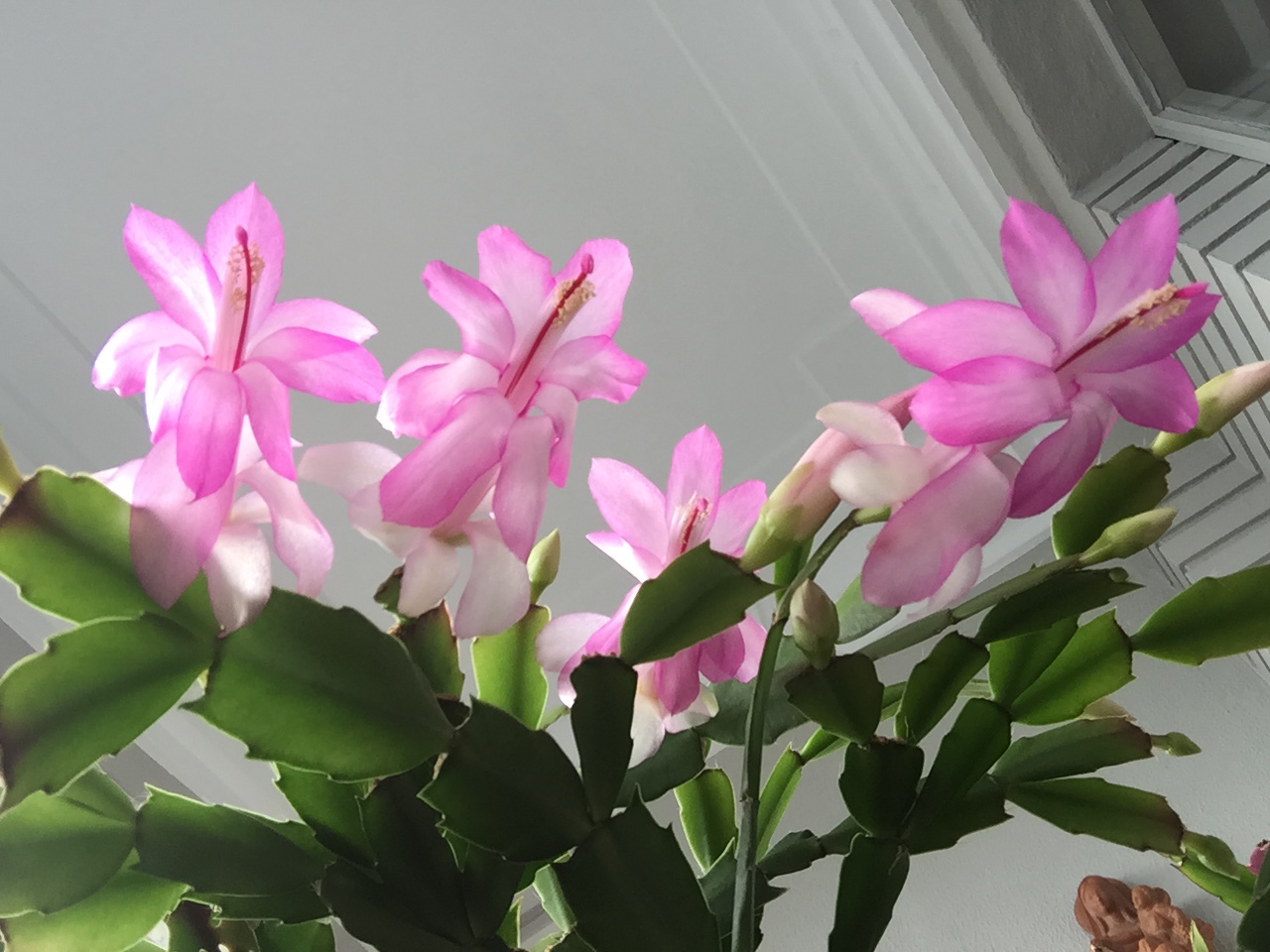
Orchid Cactus is succulent with pink flowers that give it a distinctive look. The stems of the orchid cactus are broad and have sharp edges. You can plant it in hanging baskets or pots, and it blooms without much hassle.
It grows up to two feet long and two inches wide that making it suitable to place in any mid-size pot. The pink flower blooms at the end of the stem and can grow four to eight inches. Some other varieties bloom different colors such as pink, white, yellow, red, or multicolored.
The caring is easy as you don’t need to prune it unless it grows too big. The best time to prune Orchid Cactus is right after it stops flowering.
2. Crassula Ovata (Jade Plant)

Crassula Ovata is also known as the Jade Plant, which is an excellent flowering succulent for both indoor and outdoor use. It grows like a small tree, which sometimes makes people confuse it with a bonsai tree.
Jade has a thick trunk and branches which keep water in the thick oval-shaped leaves. The leaves have a shiny green color with an occasional slight tint of red at the edge. Jade Plants love sunlight, and you have better success by placing it close to the windows.
It blooms with a white-pinkish color flower, but you have to provide the right condition for it. The bloom happens during the winter. To make it thrive, at the end of summer, place the plant where it can get a few hours of daylight and move it to a dark place at night.
Don’t fertilize and reduce watering. This triggers the Jade to start blooming as it sees it as a resting period.
3. Rock Purslane
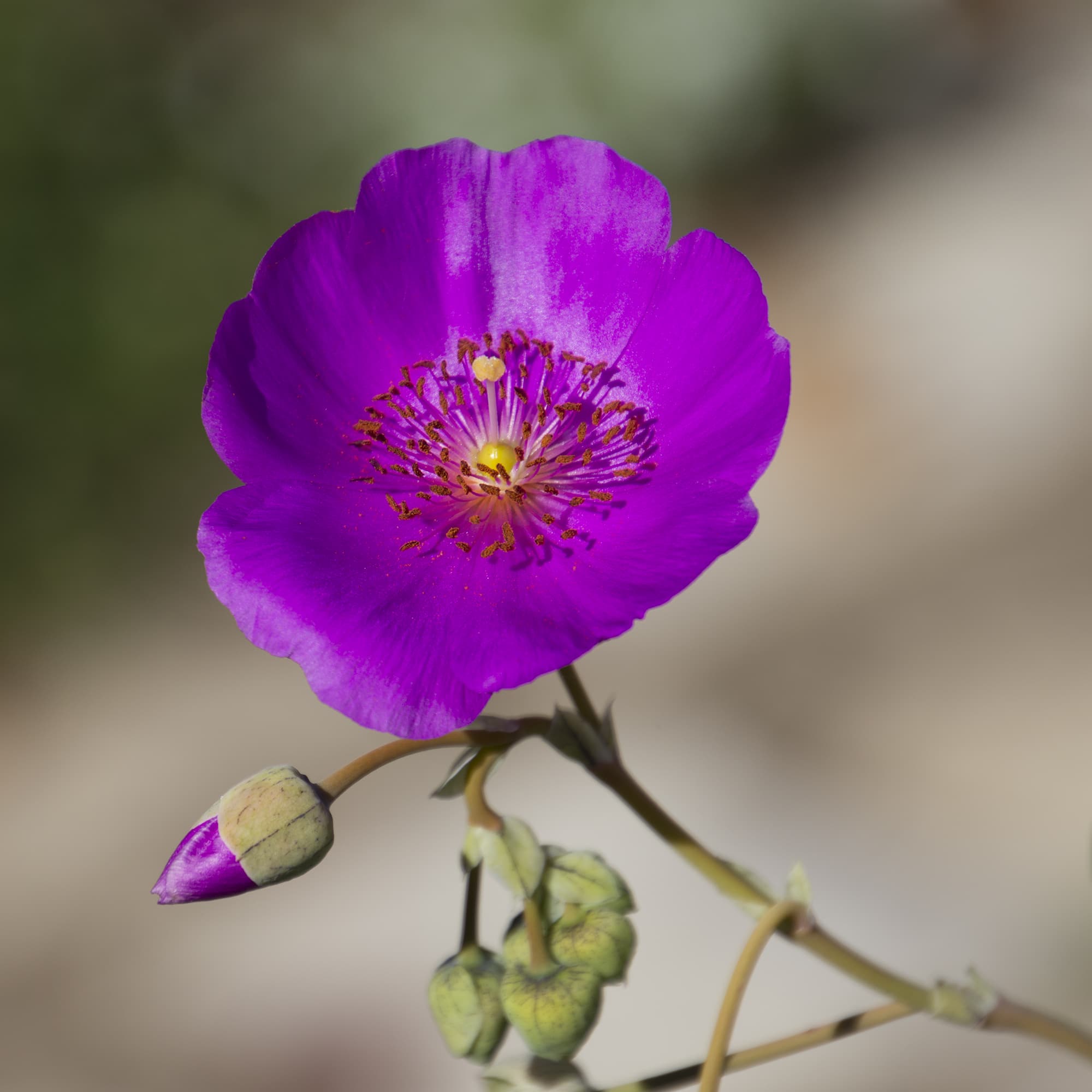
Rock Purslane is a succulent which is a native to Chile. It produces pink to a purple color floor that looks like a poppy flower. The bright and vibrant color flower attracts bees and other insects during the summertime.
Rock Purslane Succulents don’t need much care and need less water to grow. It’s a native of a warm and dry place, so it’s well adapted to survive those conditions.
A matured plant grows six to ten inches and two to three feet wide. It has a very thick bluish-green color foliage and is suitable for providing good ground cover.
The succulent usually blooms from mid to late spring and sometimes into the summer. The flower has a sweet fragrance and grows right above the foliage.
4. Kalanchoe
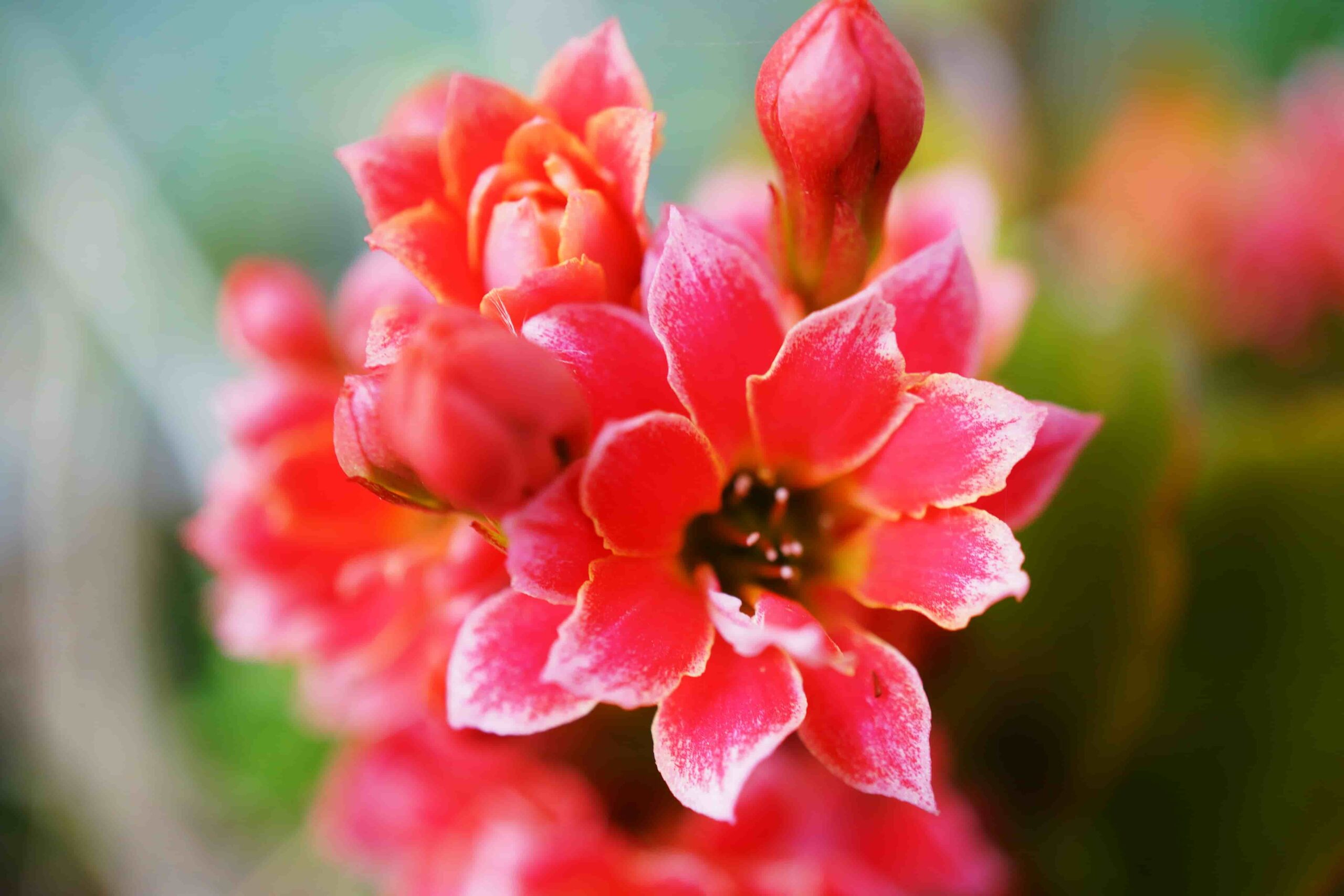
Kalanchoe is a popular succulent that grows up to 12 inches. It’s effortless to grow and doesn’t need much care. Many people also call Kalanchoe Florist Kalanchoe or Flaming Katy. You can find it available in gardening stores, flower shops, and even grocery stores.
It has very vibrant multicolored flowers that usually bloom in yellow, pink, red, and orange color. You can grow Kalanchoe, both indoor and outdoor. It needs full sunlight to grow, and the flower grows faster in better lighting conditions.
The foliage of Kalanchoe is very glossy and big. It blooms during spring and sometimes in the fall. Unlike other succulents which rarely flower or flower in a pack of one or two, Kalanchoe flower in a large bunch that makes it so attractive and popular.
Kalanchoe is a photoperiodic succulent that means it responds to the change in light exposure. To bloom Kalanchoe at its fullest, provide it with 12 hours of light and 12 hours of complete darkness.
You can do that by placing it in daylight, such as near windows, and then moving it to complete darkness at night. Also, reduce the watering and fertilization during this period for six to eight weeks to get it to start flowering again.
5. Conophytum Calculus
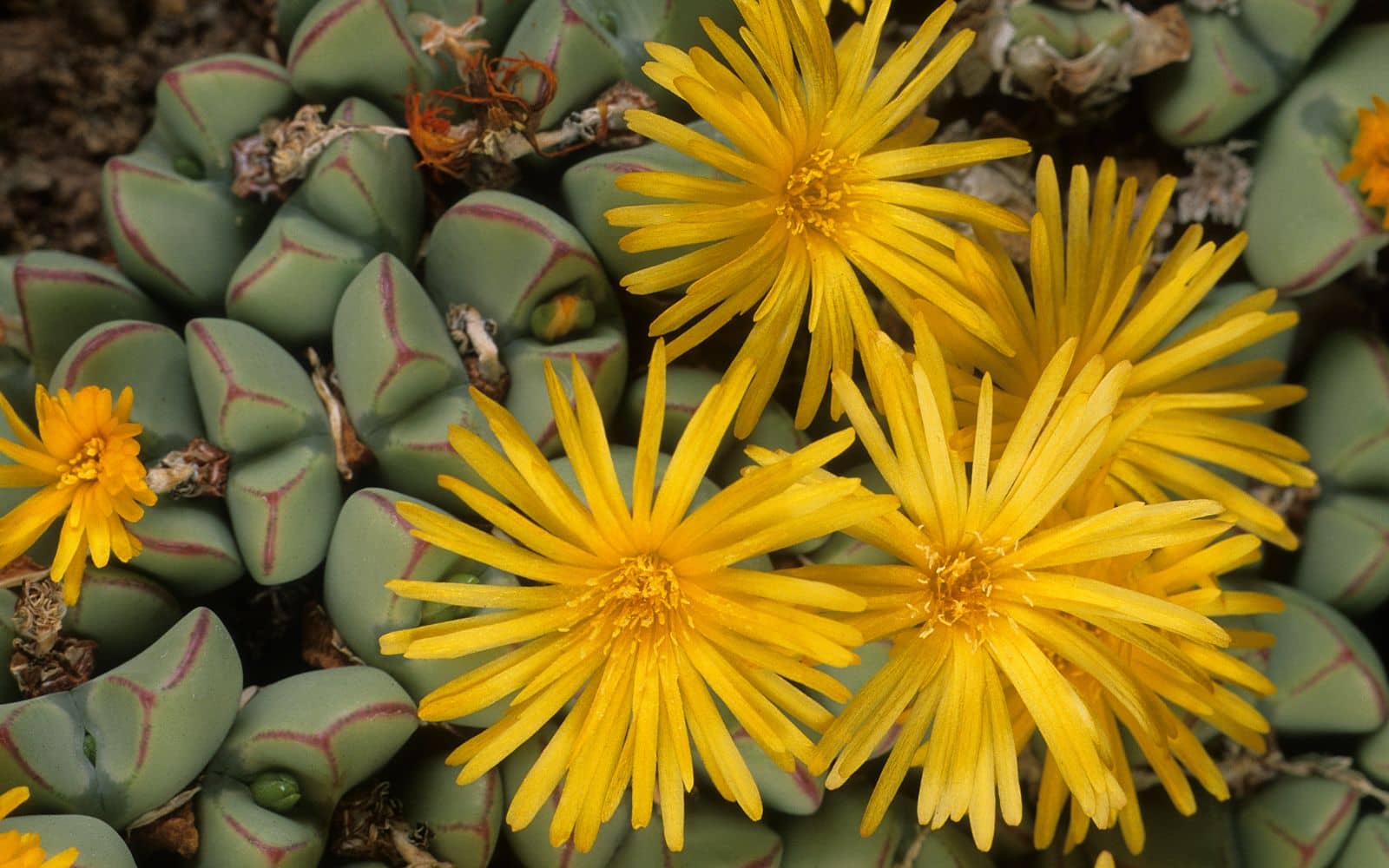
Conophytums Calculus is also known as Marble buttons due to its distinctive style growth and shape of the plant. Many people grow it in a dish garden where it grows slowly and makes good ornamental plants.
It produces yellow dandelion-style flowers that bloom in fall. You may get a different color flower based on the type of succulent. It does not like much water, so avoid overwatering it as it could rot the roots. You will know when to water the plant by looking at the epidermis, which gets a little dry and wrinkled.
You can grow Conophytum calculus through seeds by planting in a plastic pot. Due to its shallow roots, many people prefer to grow in a pan or seed tray. During germination, keep the container moist and keep it covered to provide heat and moisture to the seed.
6. Christmas Cactus
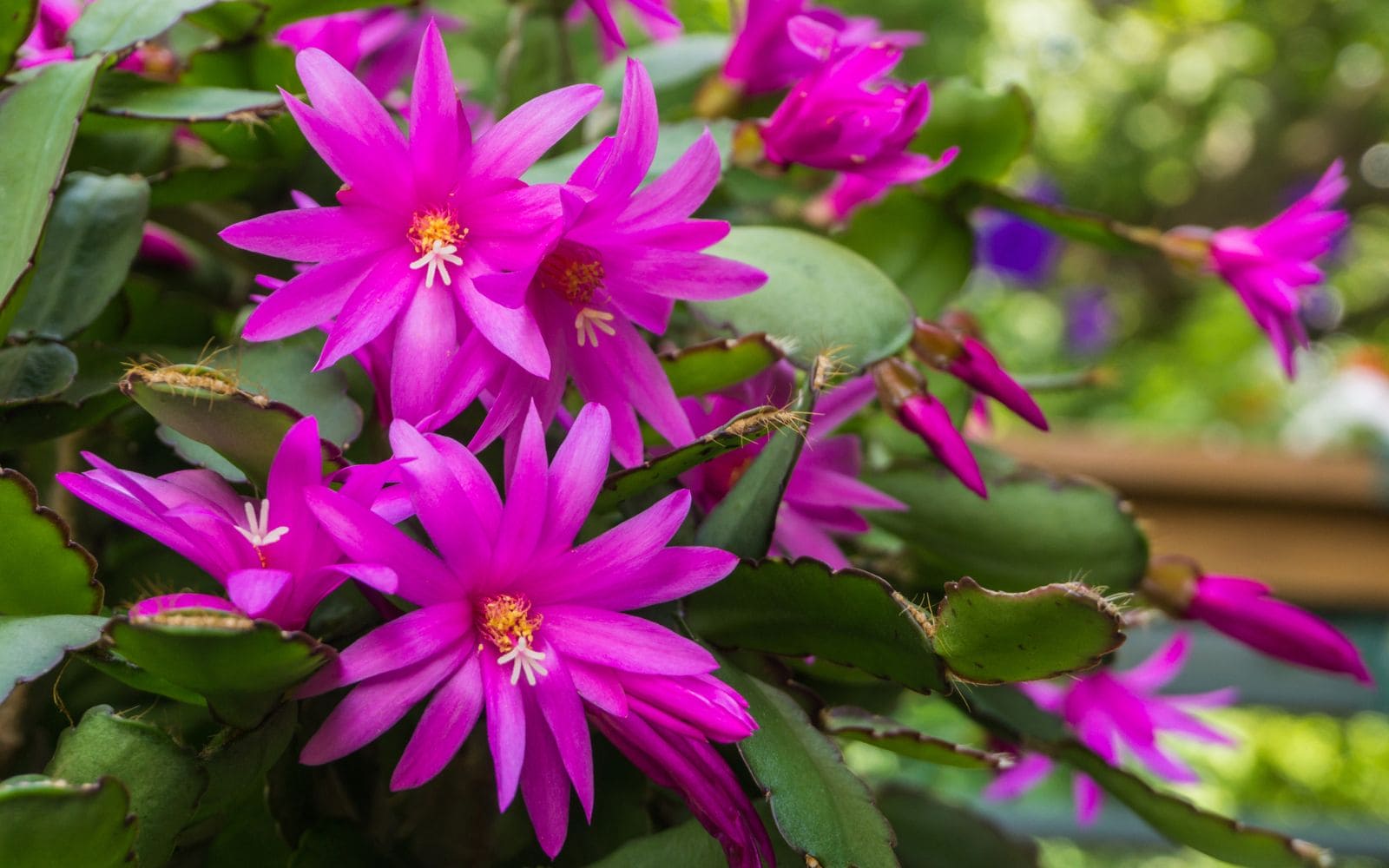
Christmas Cactus is a succulent plant that flowers from November to January. This blooming season makes people call it Christmas cactus. It blooms beautiful red, white, and pink color flowers that look very appealing.
This succulent is the best grown indoor as it needs partial shade and grows up to 12 inches tall and wide. Caring for the plant is easy. Many people make the mistake of overwatering the plant. This increases the risk of succulent roots rotting.
You have to let the water dry first before you do the next round of watering. It needs well-drained soil as the succulent does not like too much water. To make it bloom, provide it with 12 hours of light and 12 lights of darkness. This encourages flowering in succulents and develops buds.
The succulent flower is very fragile and breaks very easily. If you have too many buds, then any sudden change in temperature may cause the bulb to drop off.
To get the large flower blooms, make sure you keep it where the temperature remains steady and give it equal exposure to light and darkness.
7. Echeveria “Afterglow”
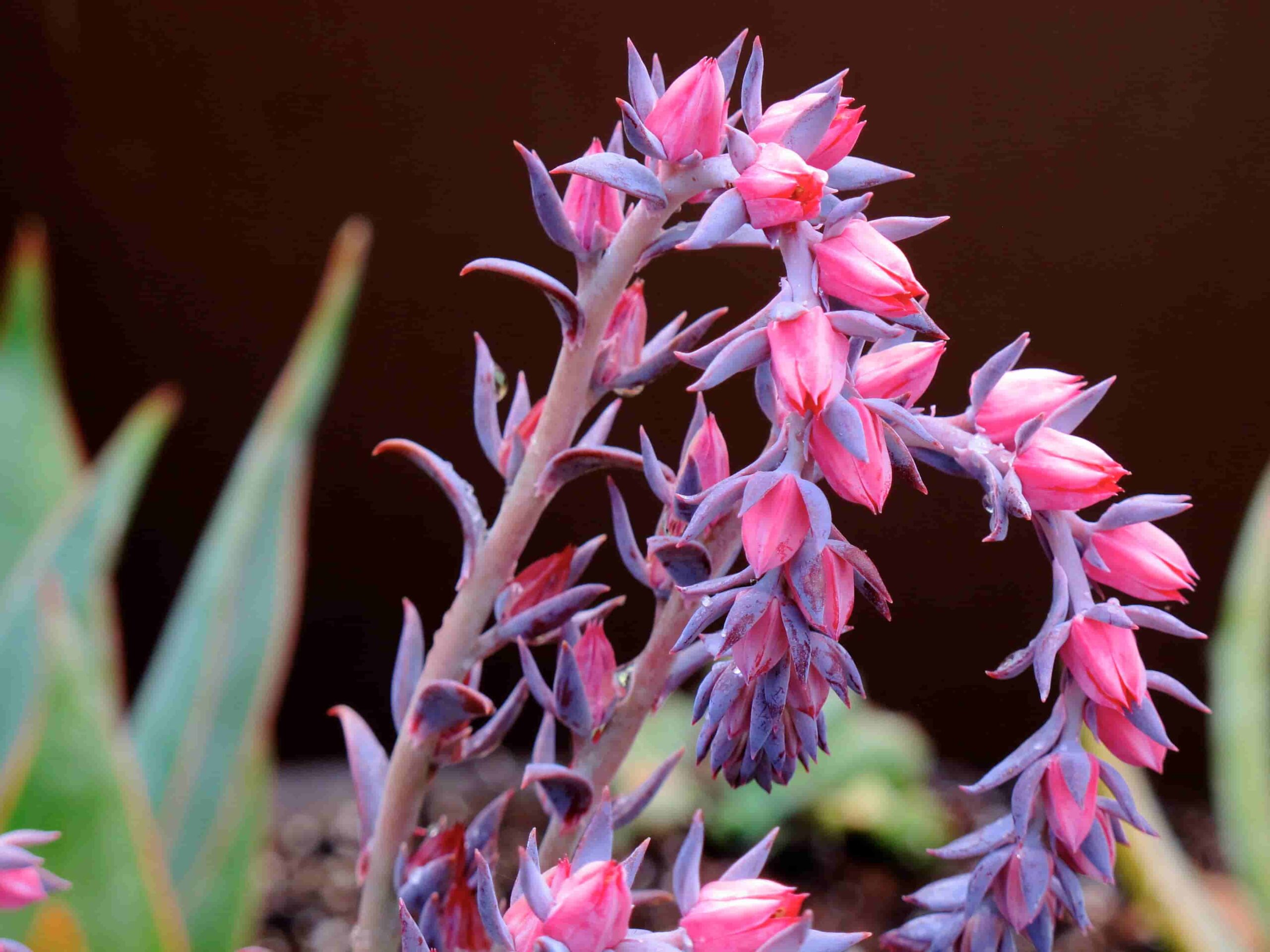
Echeveria “Afterglow” is a very unique plant as it has large powdery pink leaves that look fantastic in a garden or indoor. It grows up to two feet tall and wide. It grows well in hot and dry weather conditions and needs full sun or partial shade.
To get a mature and healthy succulent, you have to provide it with a lot of sunlight. It does not need much water as the stem of afterglow retains water and can use it as it needs.
To prevent any rotting of the roots, check the soil that it’s dry before you water it. Place sand around the plant to absorb the excess water and help succulents get it as water is needed. The flowering happens during the summer with a reddish-pink color.
Buy Echeveria “Afterglow” Succulent Plant
8. Euphorbia Biglandulosa
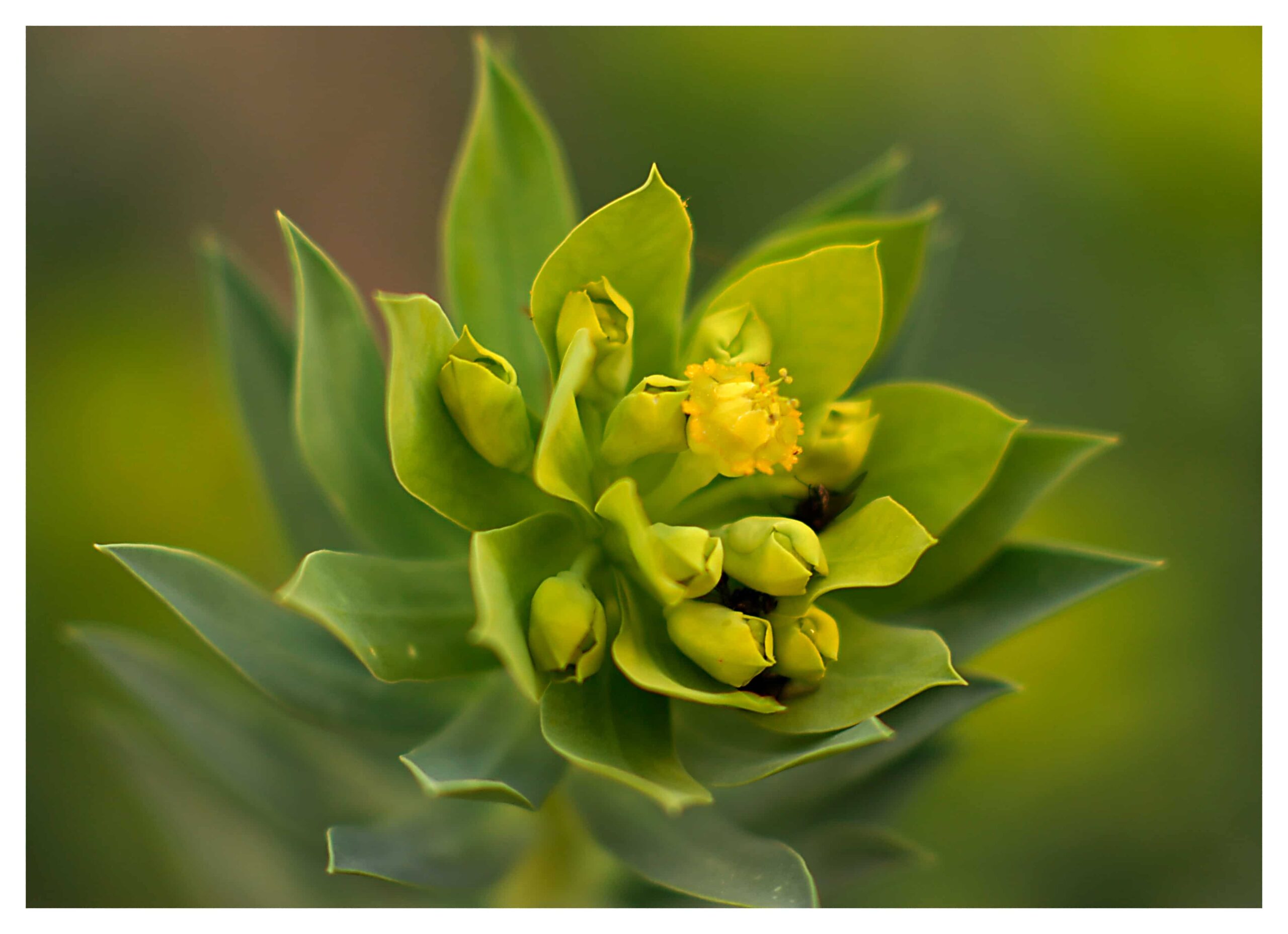
Euphorbia Biglandulosa is also known as Upright Myrtle Spurge, silver spurge, or gopher spurge. It grows best in full sunlight, dry to medium moisture, and well-drained soil.
When matured, it grows in a clump of two inches and three inches wide with pointed leaves. These leaves are bluish-green, which is around 1.5-inch-long and arranged in a closed spiral shape around the plant.
It blooms bright yellow color flowers that bloom in a dome-shaped cluster at the tip of the branch. The blooming time starts from late winter to early spring. Some species of gopher spurge flower till the end of spring.
Buy Euphorbia Biglandulosa Plant
9. Emily Cobweb Houseleek
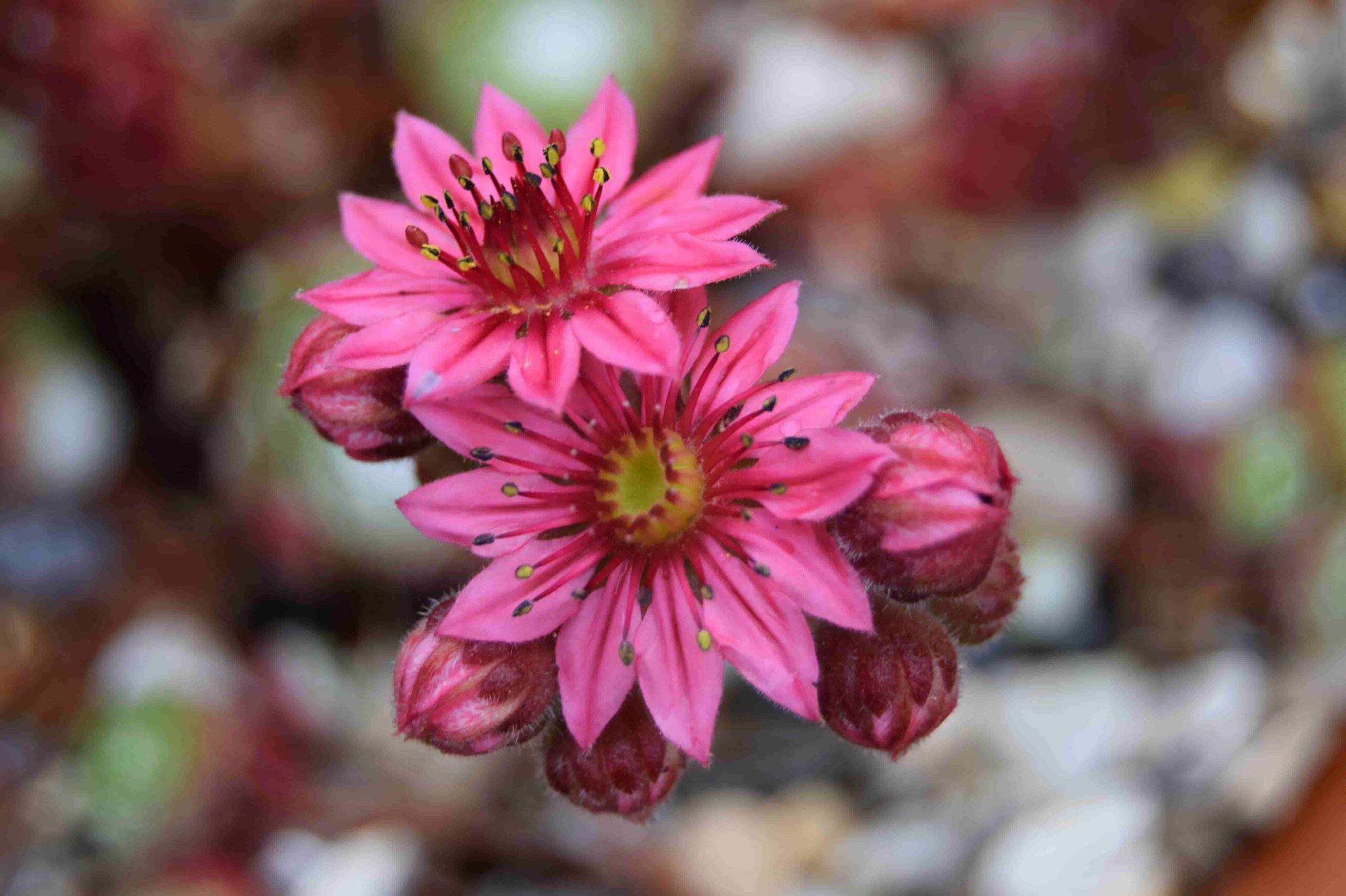
Emily Cobweb Houseleek is known as Sempervivum Arachnoideum or most commonly “Emily.” It grows light color red succulent flowers that usually bloom in clusters. The leaves of Emily grow up to three inches wide, and many people prefer to grow them in a container or rock garden.
The flower of Emily is star-shaped and has a bright pink color. The blooming happens during summertime, usually in late July. The flower grows on the raised stem of the plant and has both and male and female parts that make it easy to get pollinated.
The leaves of Emily are quite unique and appear like a flower. These leaves are bound together by a thin web-like structure that gives it a distinct look.
The shades of green and darker light hue show moderate to thick fur like a cover on its star-shaped design.
Buy Emily Cobweb Houseleek Plant
10. Ice Plant
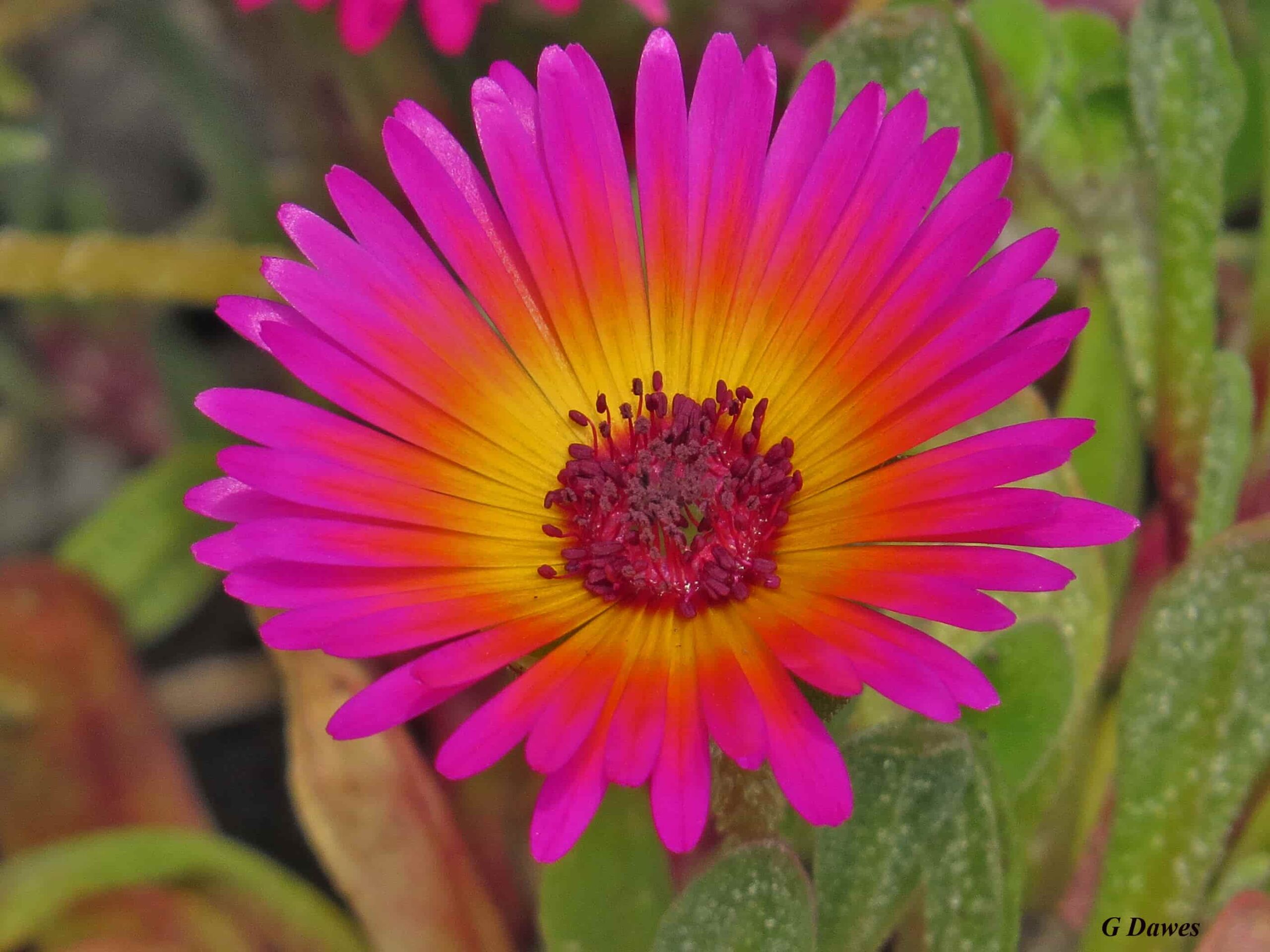
Ice plant is a beautiful flowering succulent with a wide range of blooming flower colors. The botanical name of Ice plant is Cleretum Bellidiforme and is native to South Africa. In fact, South Africa is the largest exporter of Ice Plant in the world.
This is a winter-growing succulent, and the leaves are thick green with a spoon-shaped layout. It has several spreading branches and provides a low ground cover.
The leaves of ice plants have tiny pouches at the top of leaves that store water. These water pouches glitter when sunlight falls on them and looks like ice crystals.
Ice plant grows many flowers from its branch tips. These flowers are very bright in color and are two to three centimeters in diameter. The flower petals open during daylight.
You can get flowers that are orange, pink, magenta, red, white, yellow, and cream-colored depending on the succulent variety.
11. Stonecrop
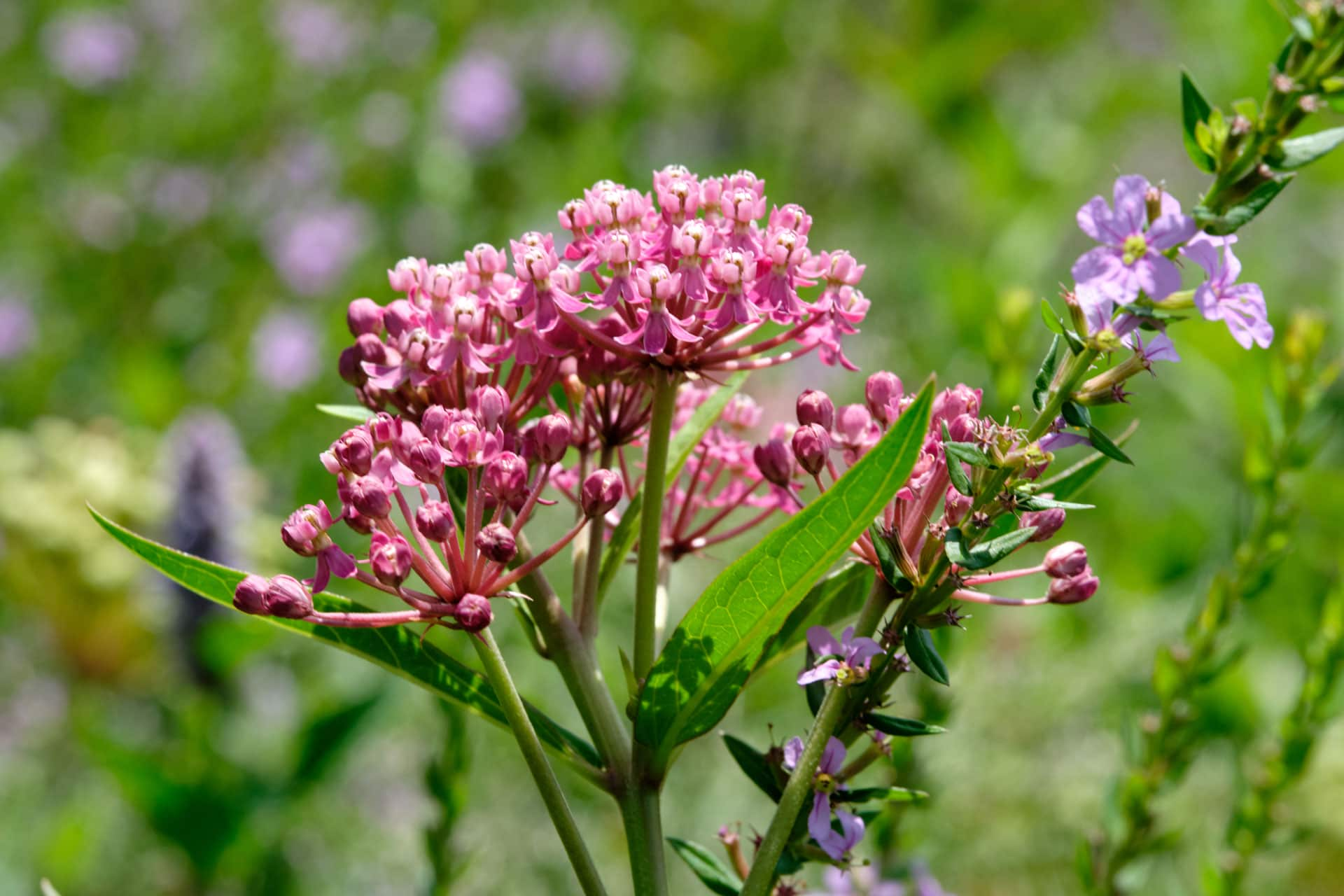
Stonecrop is an easy-to-grow succulent that grows beautiful flowers during the summer and autumn. Many people also call it sedum and have two varieties – creeping sedum and tall sedum.
The tall sedum has long upright stems that grow one to three feet tall. It flowers at the tip of the plant and produces clusters of beautiful colored flowers. You may also plant hybrid tall sedums that are shorter in length and contains colorful leaves.
The creeping sedum is a ground cover succulent and has very colorful yellow, copper, blue, and maroon foliage. This species of sedum does not produce many flowers but is grown for its good-looking leaves in the garden.
For planting sedum indoor, try Autumn Joy sedum that bears brink pink and magenta color flowers. You can plant it in the spring, and the summer heat helps it grow faster.
12. October Daphne
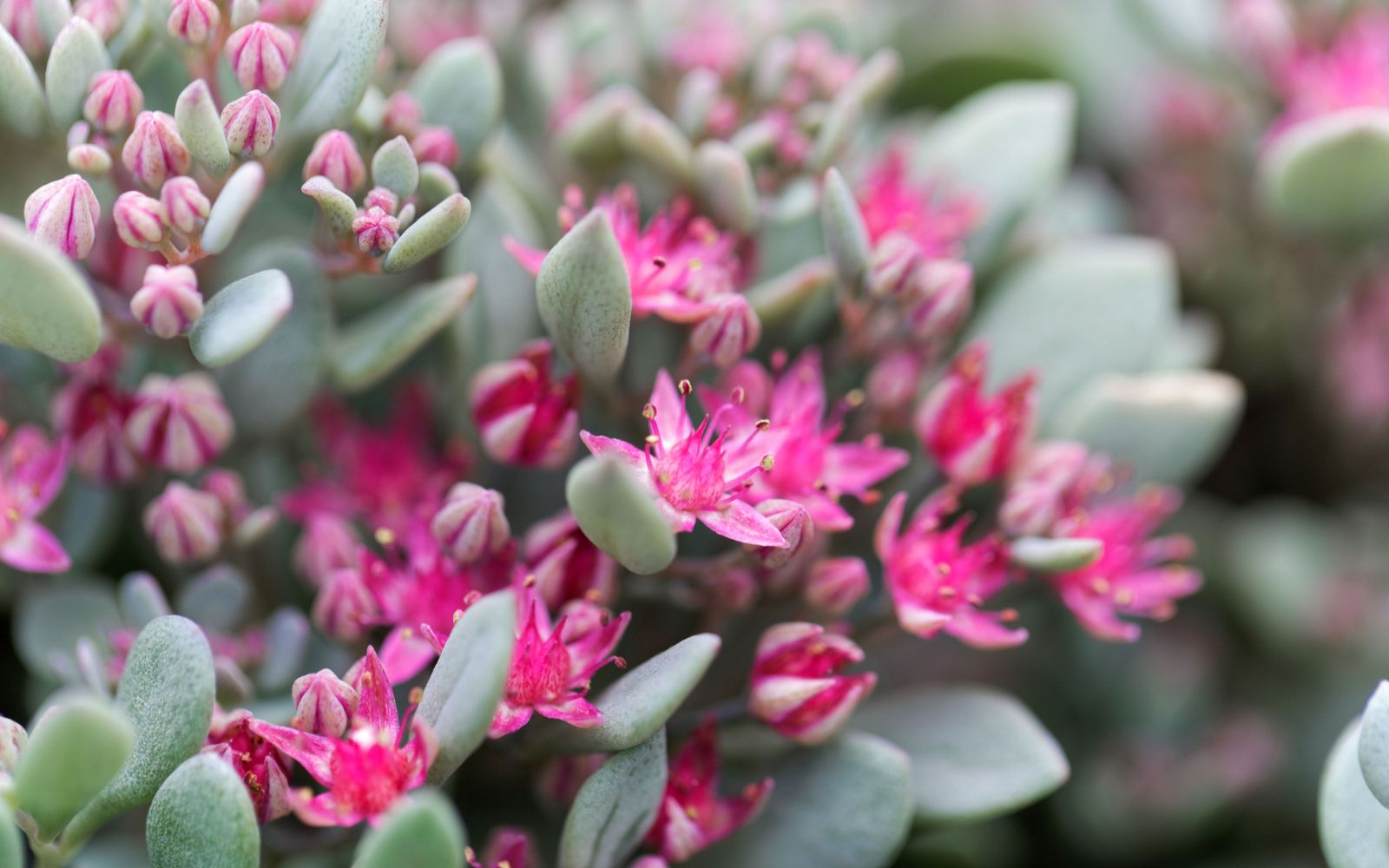
October Daphne is also known as Hylotelephium Sieboldii. This is a perennial succulent plant native species of Japan. It has broad, attractive leaves that are round and contain greenish-blue color.
It’s a medium growing size succulent that can grow up to four inches and eight inches wide. It bears clustered bright color star-shaped flowers at the end of stems. You can plant it both indoor and outdoor where it can get full to partial sunlight.
Like other succulents, it does not need much care and water it moderately during the growing season. If you are planting it indoors, then you may have to water it more regularly than planting it outdoor.
13. Peanut Cactus
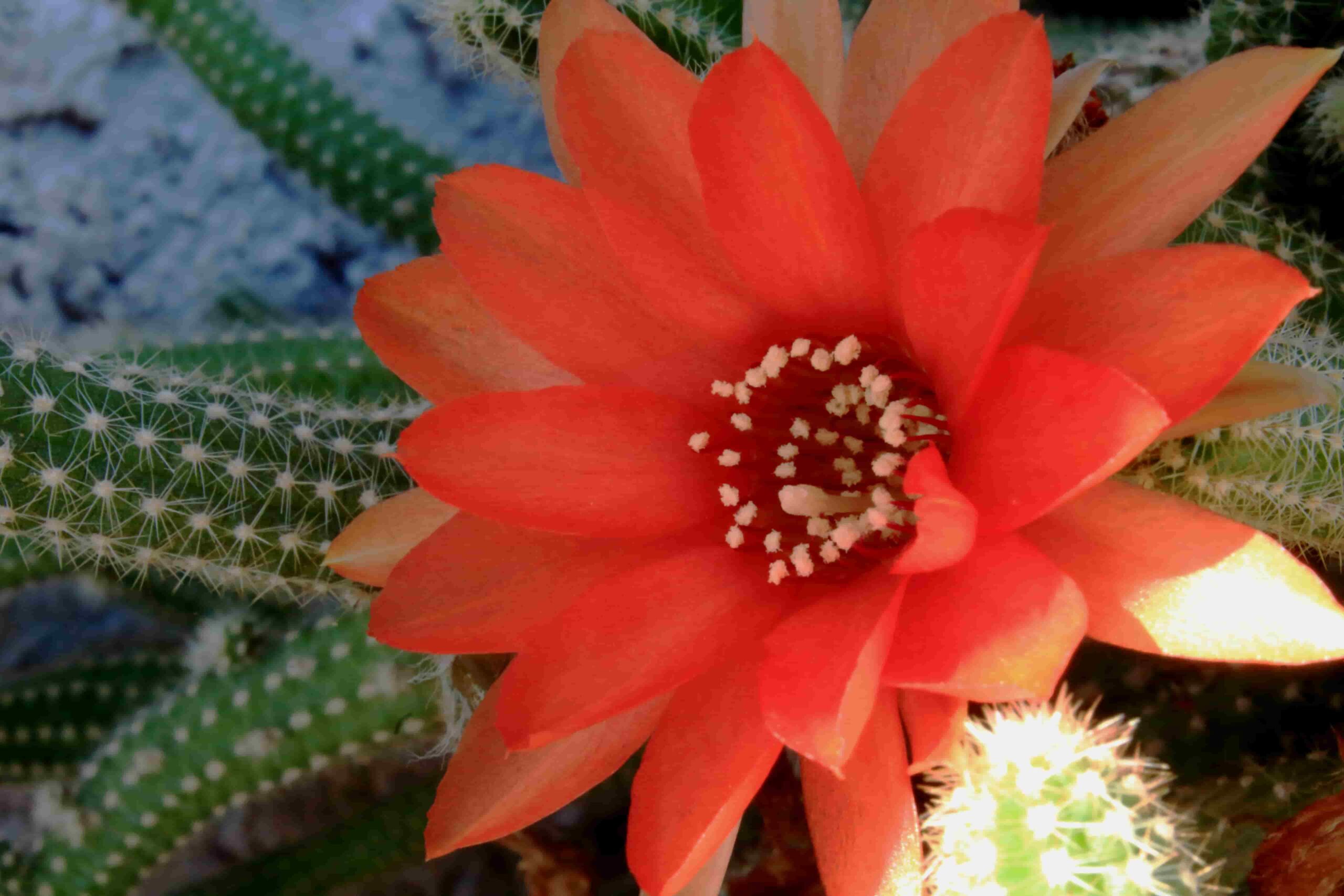
Peanut Cactus is hot weather succulent that you may be familiar with as a general type of cactus plant. The peanut cactus has a botanical name of Echinopsis Chamaecerus that is found in Argentina.
The succulent has very shallow roots, and the plant can grow about six inches tall and 12 inches wide. It blooms from late spring to early summer. It flowers few but large reddish-orange color bloom.
You can plant peanut cactus in a pot or containers and place it where it can get full sunlight. It may take a while for the succulent to mature and start blooming. But the lovely flower and unique shaped succulent looks beautiful while growing.
14. Portulaca
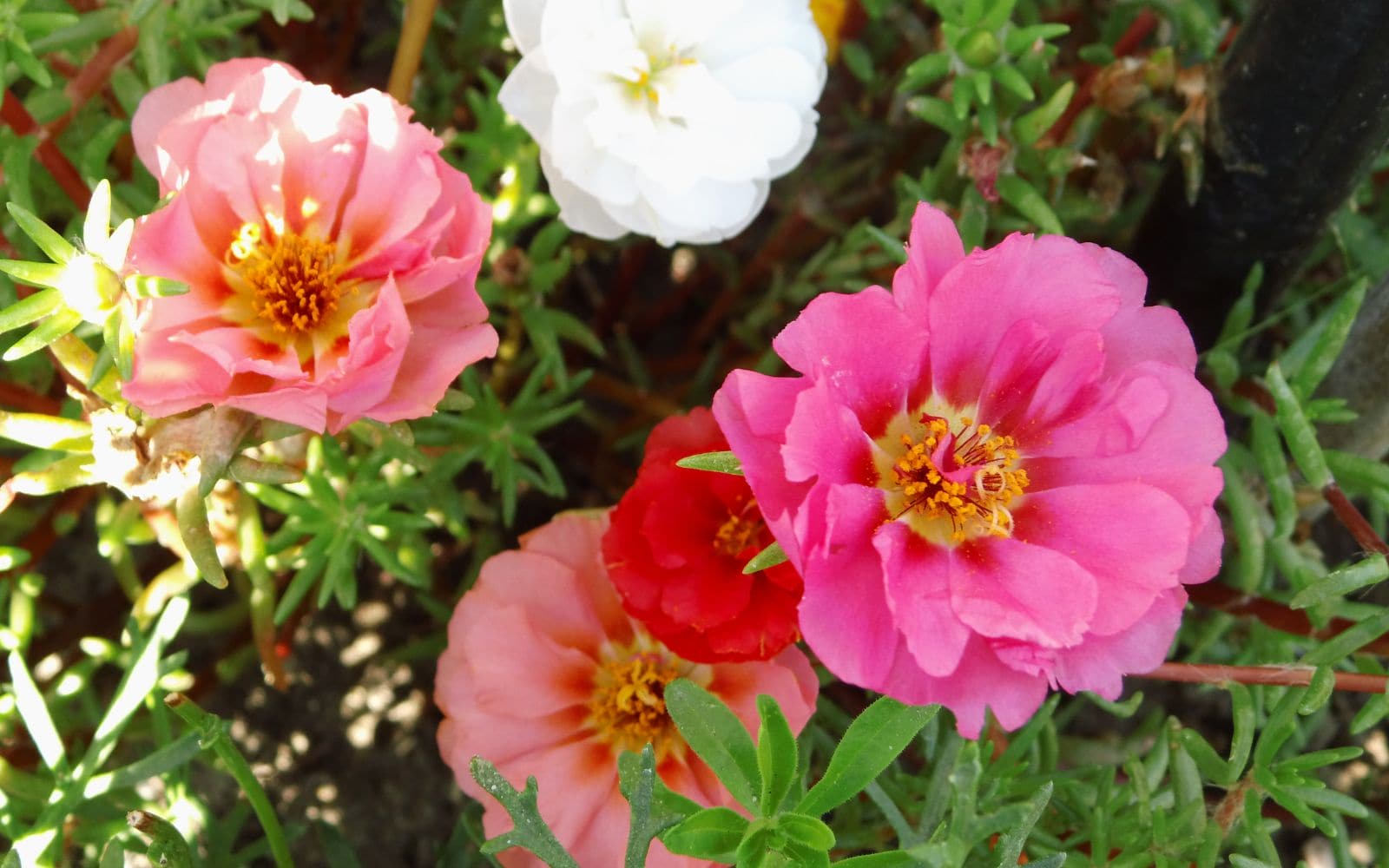
Portulaca is also known as Moss rose plant that is trendy succulents available in the garden centers and home stores. It’s a drought-tolerant plant and grows three to eight inches tall and 12 to 24 inches wide.
It blooms annual flower from early summer to frost with a color range of white, yellow, red, and orange. It’s easy to care for and doesn’t need much water that making it suitable to plant in a container and place on a patio or deck.
You can grow Portulaca through its seed by spreading it outside after the frost. If you are planting it indoors, then start six to eight weeks before the last spring frost. To make sure that it blooms, plant it where it can get full sun. Don’t apply too much fertilizer; otherwise, it will grow more leaves than the flowers.
The flower of Portulaca succulent close during the bright daylight. You can use a sundial mix variety that stays open longer, even in bright sunlight.
15. Ruby Ball Cactus
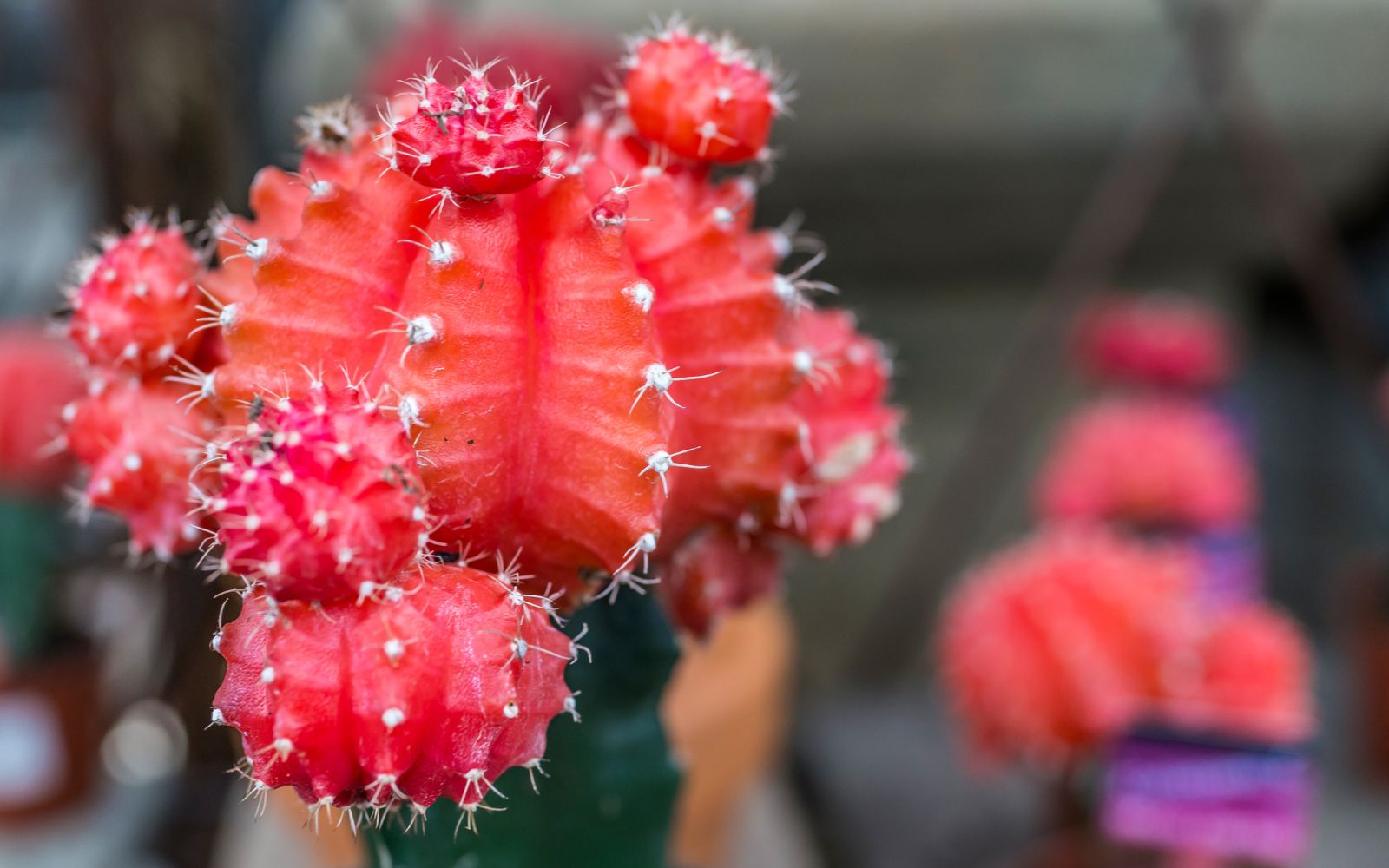
The Ruby ball cactus produces a very colorful and bright top flower bud with no hair or stem. The lower part of the plant remains green. This gives the appearance of a giant colorful flower at the top. Many people like to place it indoors on the desk or in the bathroom.
The ruby ball cactus is also known as moon cactus and red cap cactus. It’s a perennial plant and needs full sunlight to grow. The caring of the ruby ball cactus is quite easy as it doesn’t need much watering.
For the top flowering to remain bright and stay for a long time, avoid putting it in direct sunlight. Place the plant in a partial or shade area where it gets the sunshine but doesn’t get exposed to it.
The lower green part of the plant likes more direct sunlight, and when it’s growing, you can place it in direct sunlight.
16. Euphorbia Milii
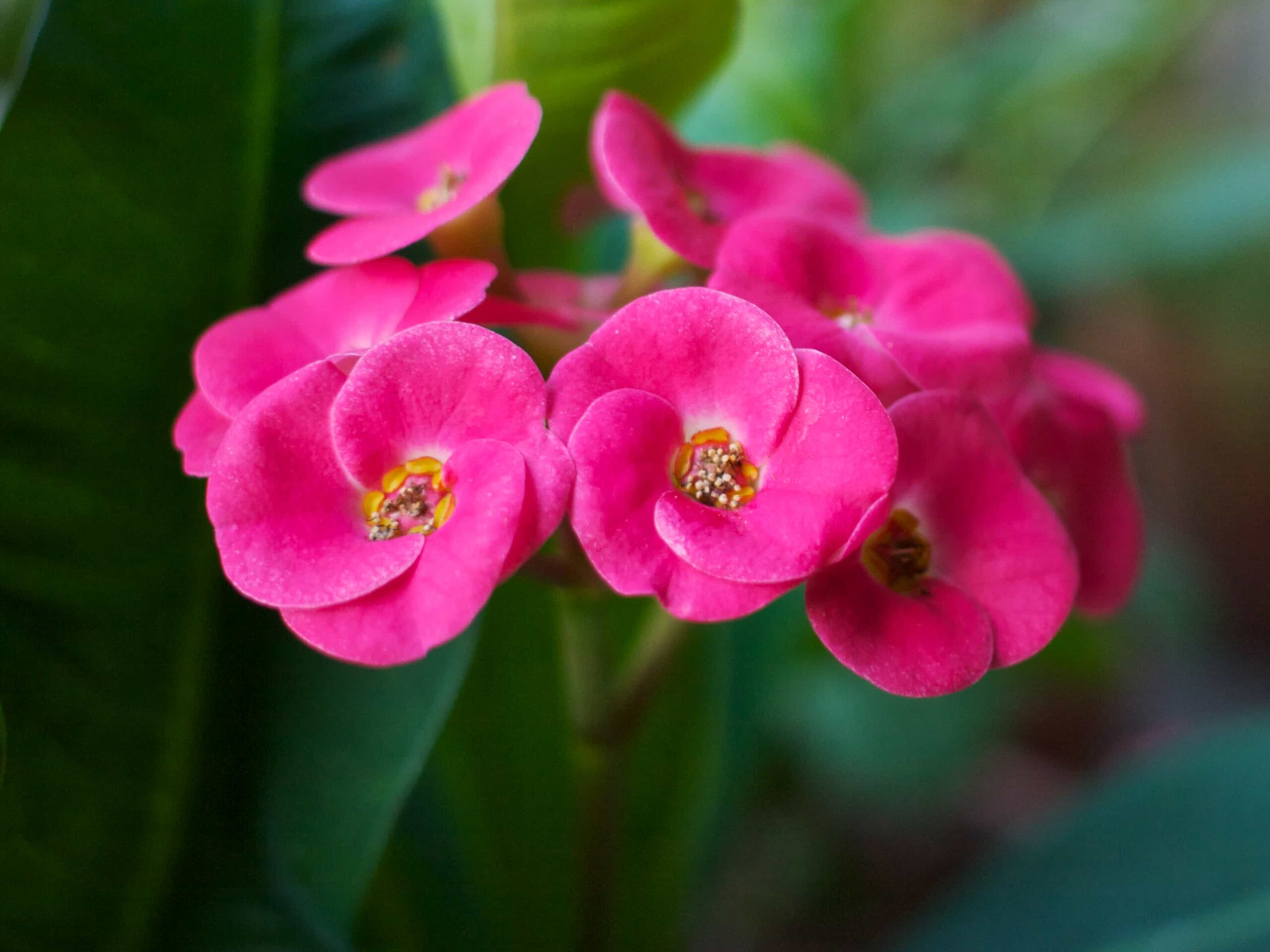
Euphorbia Milli is a popular indoor plant that has very sharp and thorny stems. People also call it the Christ plant due to its sharp thorn. The succulent has round leaves and thorny shrubs that grow 10 cm to 50 cm high.
It blooms very soft multicolored flowers that have a smooth appearance. Be careful when planting it indoors as it contains poisonous latex that may cause skin irritations. Keep it out of reach of children and pets when planting it indoors.
To get the most flowering, place it where it can get full sun exposure. The more sunlight it gets, the brighter and more prolonged the flower remains.
17. Aloe
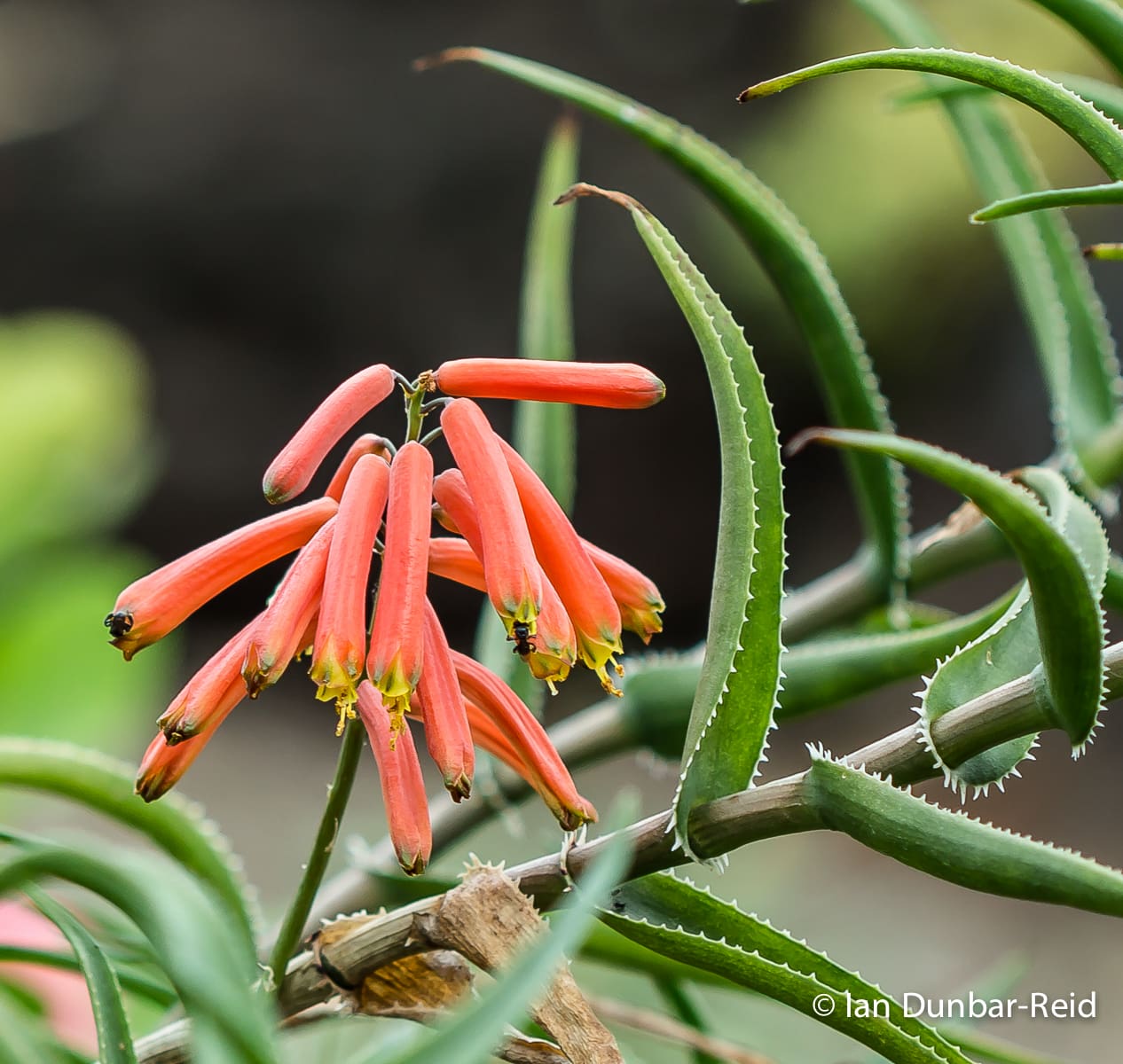
Aloe is a very popular succulent that you may be most familiar with. It’s native to Africa and Madagascar. Aloe has long fleshy pointed leaves that grow in clusters. It blooms a very bright and long bunch of flowers from February to September.
Depending on the variety of Aloe, you can get orange, white, red, and yellow color flowers. The Aloe has lots of medicinal properties as it’s used in the treatment of burns.
You can grow Aloe in a container or outside in the garden. It needs full sunlight to grow, and when matured, it becomes one to two feet tall.
The flower of Aloe grows two to three feet tall and needs full sun to bloom. If you are planting it indoors, then move the plant outdoor when the temperature warms up.
The most suitable temperature to encourage flowering Aloe succulent is between 21 and 29 degrees Celsius.
18. Adenium Desert Rose Plant
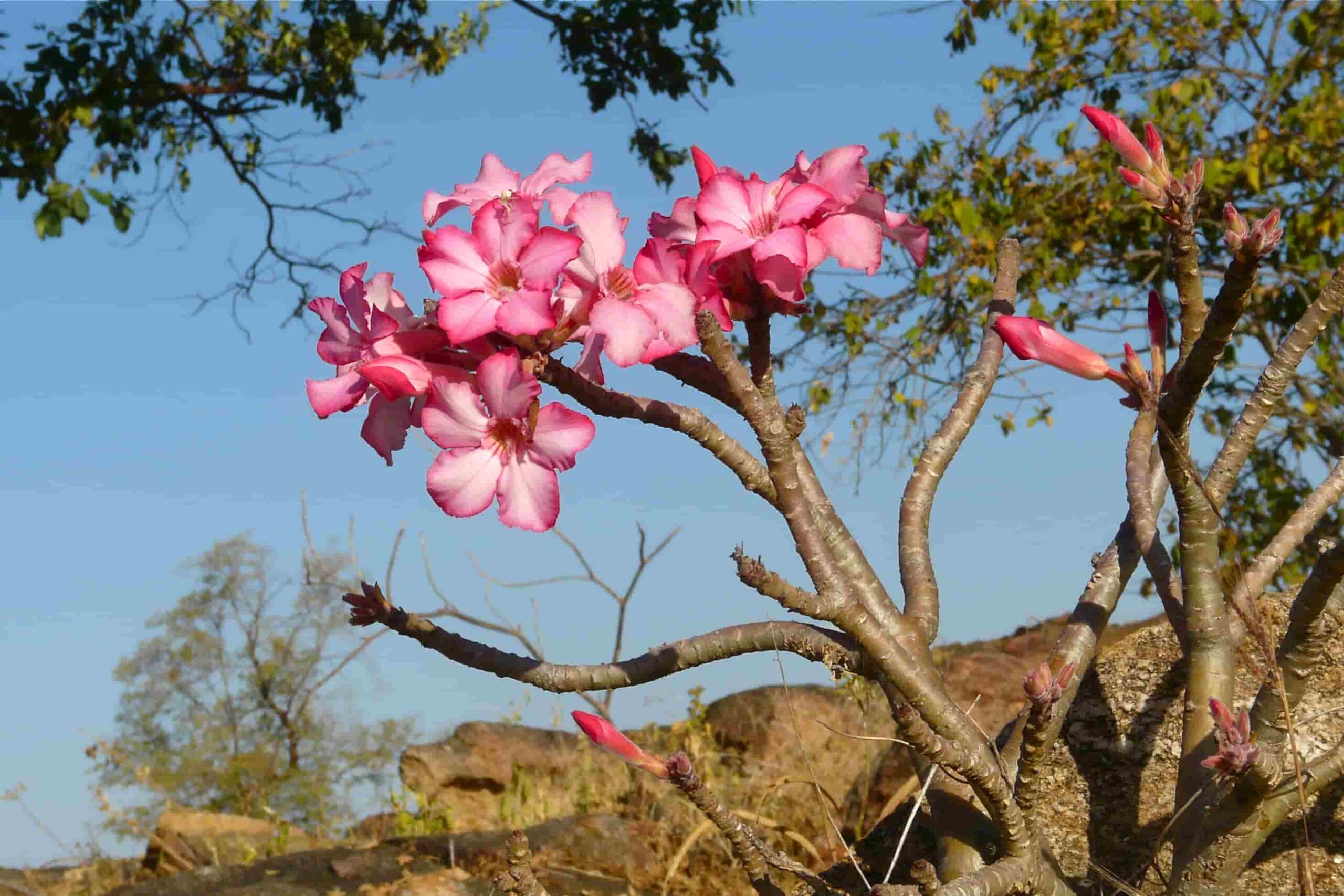
Adenium desert rose plant is native to Africa and the Mediterranean and grows the beautiful bright color flower. This tropical plant has a distinct class due to its swollen trunk. This is where the plant stores water and moisture, unlike other succulents that store it in leaves, stems, or roots.
It flowers a 2 to 3-inch size and comes in a shade of red, white, yellow, and pink. It loves full light, and to get full bloom on this plant, provide it with at least six hours of full sunlight.
You can plant it in a container, and it grows up to six feet tall. There is also a smaller variety called desert rose bonsai that blooms at the top and looks like a small tree.
19. Tacitus Bellus
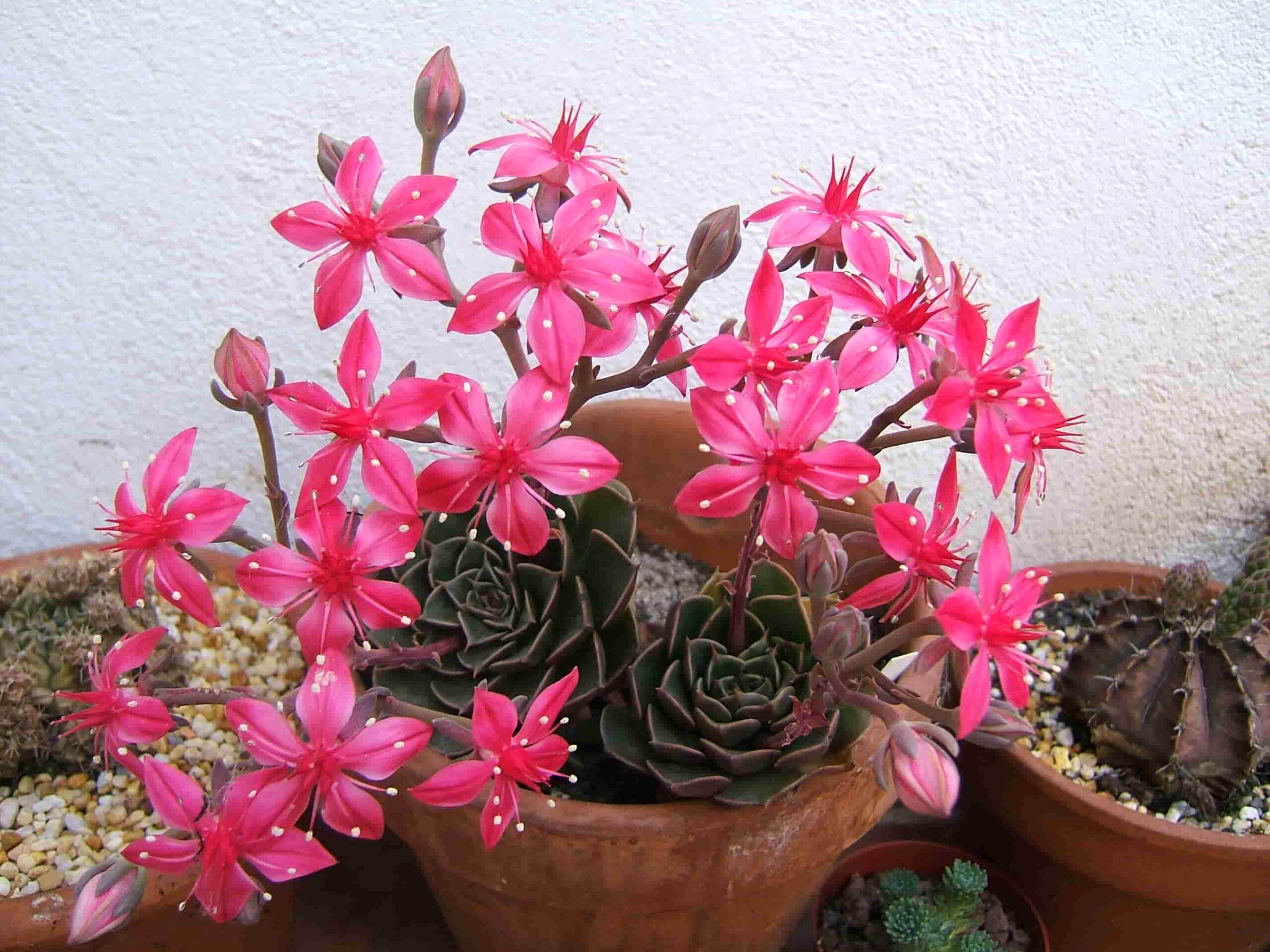
This succulent is native to Mexico and produces bright-colored star-shaped flowers. The succulent can grow up to three inches, and its rosettes can grow as big as four inches.
The flower of Tacitus Bellus succulent contains five petals that have dark pink or red stamens tipped with light-red and white color at the center. This succulent flower blooms from the end of spring to early summer. The flower can last several weeks if provided excellent care.
This is a partial shade succulent, so it does not need as much light as other succulents to grow and bloom. You don’t have to water it often as it retains the moisture in the plant. After the bloom, you can harvest it and save the seed.
Commonly Asked Questions:
What to do with flowering succulents?
Taking good care of succulents makes the bloom last longer. While it retains the same vibrancy and colorful brightness of the flower. The succulents are very picky when it comes to flowering. You have to provide the right care and temperature to encourage the flowering.
The succulent flowers are attractive to insects, such as aphids that can destroy the flower as well as the plant. Spray the succulents with organic herbicides or with water mixed alcohol and horticulture soap.
Read More: Jackfruit vs Durian: What is the difference?
What stimulates flowering in succulents?
Lots of sunlight during the daytime and complete darkness at night-time encourages the flowering of succulents. When using indoor, place the succulent plant indoors near the window for at least 10 to 12 hours a day. Then move it somewhere darker such as in the basement where there is no light for another 10 to 12 hours.
Most succulents bloom in late spring to early summer while some varieties may bloom in fall. Know the type you are planting and its usual blooming cycle. Don’t overwater or fertilize the succulents as this encourages foliage growth rather than flowers.
What succulents die after flowering?
Monocarpic succulents bloom a single season, and the plant dies after flowering. The name Monocarpic means a single fruit or plant with a single flowering period.
Polycarpic plants have many flowering periods, and it produces flowers and seeds during many seasons. Polycarpic succulents remain healthy and keep growing after flowering. Whereas Monocarpic succulents bloom only once and then die after single flowering.
Sempervivum is a monocarpic succulent that dies off after it bloomed once, and flowers fade. It comes in a wide variety of colors, and once the succulent die after flowering, you have to replant it.
The other monocarpic succulents are Agave Vilmoriniana, Kalanchoe Lucia, Aechmea Blanchetiana, and Agave Victoriana.
When to trim succulents with flowers?
Trimming succulents helps with the growth and blooming of succulents. You should start cutting the succulent during the early spring before the flowering begins. This helps a plant to provide more energy to the flower, and you get a stronger and healthier flower.
The other time you can trim succulents is during the fall or winter when the blooming often stops, and the plant becomes dormant. Remove excess leaves and shape the succulent plant during that time.
How to care for blooming succulents?
Succulents need low maintenance and don’t need much care while growing. But if you want it to flower, then you may have to provide it a bit of attention to maintain and encourage the flowering.
Here are some ways you can care for succulent:
Light
Succulents love light, and most prefer full to partial sunlight while growing. If you are in a sweltering area, then move the succulent in the shade to prevent any burnout of delicate flowers.
Water
Succulents can survive in hot, humid, and dry weather conditions. This is why they store water in the plant as succulents are drought species plants.
Watering too much to the flowering succulent may rot the roots of the plant and causes the flower to wither and fall off. Always water it after checking that the soil has dried off.
Fertilizer
Succulents don’t need much fertilizer when it’s growing. But when it’s flowering, you can sprinkle little fertilizer, which contains more phosphorous in it as it encourages growth. But if your soil has enough balanced nutrients, then fertilization is not required.
Soil
Succulents don’t like moist and damp clays. Make sure that there is proper drainage in the ground so water will not stay at a spot.
If you are planting succulents indoors, then use a pot that has a water drainage hole underneath it. You can also include sand, gravel, and rocks for better drainage and proper airflow to the roots of succulents.
How to grow flowering succulents from seed?
For growing succulents from seed, always choose a reputable brand that can provide you with a healthy seed. You don’t want to buy a seed that does not propagate later on or grows very weak succulent.
Seed selection is a necessary process, and you should always buy seeds from a reputable vendor. If you are getting seed from your existing succulent plants, then make sure the seed is not damaged or diseased.
Here are steps to grow flowering succulent from seed:
Step 1: Inspect and wash the seed before planting. Look out for any fungus or rotting on the seeds. You can also disinfect the cleaning pan before cleaning the seed to prevent any contamination. Prepare containers where you want to grow the succulent.
Note:
Expert tip: Inserting a coffee filter at the bottom of the container provides better drainage.
Step 2: Fill up the container with pumice and sand. On the top layer, add some extra pumice and then fill the fine layer of sand on the very top.
Step 3: Use a wet toothpick to pick the succulent seeds from the shipping pouch and spread them around the top. Shake or tap the pot to let the seed fall in its place.
Sprinkle some water in the pot and cover it with a plastic wrap, including the top. This helps keep the moisture.
Step 4: Leave it where it can get some sunlight. Keep an eye on the soil moisture, and don’t let it dry out, but don’t overwater it either.
Check the sprouts, and if there is any succulent seed that does not have enough sand around it, move it and cover it with sand. This helps with the root to find a stable base to grow.
Step 5: The seeds will start germinating and will be ready to transplant in 5 to 6 months. Depending on the type of succulent, some can be transplanted when it’s two to four inches, while some succulent plants need to grow a bit larger.
When you are planting many varieties at the same time from seed, you can use sticky notes and write the name of the plant on it. This helps you provide the right growing condition of succulent plants when it’s germinating.
How often to water flowering succulents?
Succulents don’t need much water, as these are drought-resistant plants. But when it starts flowering, then watering it at least once a week provides an excellent blooming environment for succulents.
Provide enough water to succulent soil, so water starts running through a drainage hole in the pot. This provides enough moisture to grow flowering succulents.
During winter and colder days, most succulents go dormant and need less water. Check the soil for dryness before watering it again.
Indoor succulent plants lose water more than outdoor plants. This is due to heating and higher indoor temperature than outside. Water these indoor flowering plants more than the outdoor succulent plants.
If you are using tap water, it contains lots of chlorine and other water-treating agents and minerals. These minerals slowly build up in the soil that often needs repotting after a specific time. You can use mineral water or even rainwater to irrigate flowering succulents.

